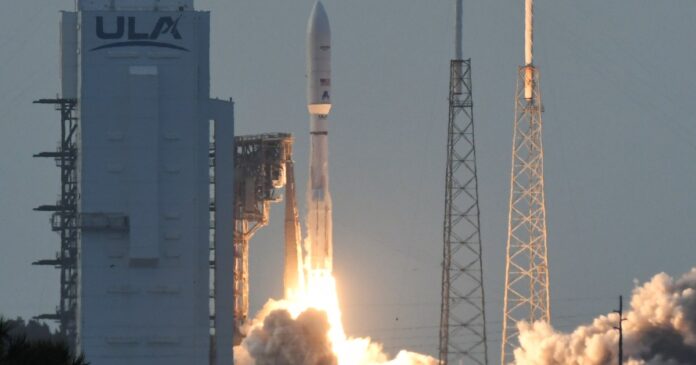Introduction to Amazon’s Kuiper Broadband Internet Constellation
Amazon’s Kuiper broadband internet constellation is starting to take shape, with its first batch of satellites shipped and deployed into space. This launch is just the first of 80 that Amazon has lined up to take all 3,236 Project Kuiper satellites into low-Earth orbit as part of the retail giant’s effort to compete with Starlink — SpaceX’s market-dominating satellite internet business.
The Launch of Kuiper Satellites
The United Launch Alliance (ULA) Atlas V rocket carrying Amazon’s first 27 Kuiper satellites was launched from Florida’s Cape Canaveral Space Force Station at 7PM ET on April 28th, after its first attempt on April 9th was scrubbed due to poor weather conditions. The successful launch marks a significant milestone in Amazon’s mission to provide high-speed, low-latency satellite internet to customers worldwide.
Reaction from Amazon CEO
“While this is the first step in a much longer journey to launch the rest of our low Earth orbit constellation, it represents an incredible amount of invention and hard work,” Amazon CEO Andy Jassy said. “I am really proud of the collective team.” The CEO’s statement reflects the company’s excitement and commitment to the project, which is expected to revolutionize the way people access the internet.
Deployment and Activation of Satellites
The Kuiper satellites were deployed 280 miles (450 kilometers) above Earth, and Amazon has confirmed that the satellites are successfully activated and communicating with ground systems. If all goes to plan, Amazon said it expects to start providing “high-speed, low-latency” satellite internet to customers “later this year.” This is a significant development, as it will enable people in remote and underserved areas to access fast and reliable internet connectivity.
Partnership with United Launch Alliance
“This launch marks the first step towards the future of our partnership and increased launch cadence,” ULA CEO Tory Bruno said in a post-launch statement. “We have been steadily modifying our launch facilities in Cape Canaveral to support the capacity for future Project Kuiper missions in a manner that will ultimately benefit both our commercial and government customers as we endeavor to save lives, explore the universe and connect the world.” The partnership between Amazon and ULA is crucial to the success of the Project Kuiper mission, which aims to launch thousands of satellites into low-Earth orbit.
Competition with Starlink
The $10 billion Project Kuiper plan was announced in 2019 and is now under a deadline from the US Federal Communications Commission to have 1,618 satellites deployed by mid-2026 — half of its total constellation, but significantly fewer than the more than 7,200 satellites that Starlink already has in operation. By contrast, SpaceX announced yesterday that it had completed its 50th Starlink mission of 2025, passing a total milestone of 250 dedicated Starlink launches to date. The company is currently aiming to have 12,000 Starlink satellites in orbit, but already has regulatory approval to expand to 34,400 satellites.
Conclusion
In conclusion, Amazon’s Kuiper broadband internet constellation is a significant development in the satellite internet industry. With its first batch of satellites deployed and activated, Amazon is one step closer to providing high-speed, low-latency internet connectivity to customers worldwide. While the company faces stiff competition from Starlink, its partnership with ULA and commitment to innovation position it well for success. As the project progresses, it will be exciting to see how Amazon’s Kuiper constellation evolves and impacts the way people access the internet.

